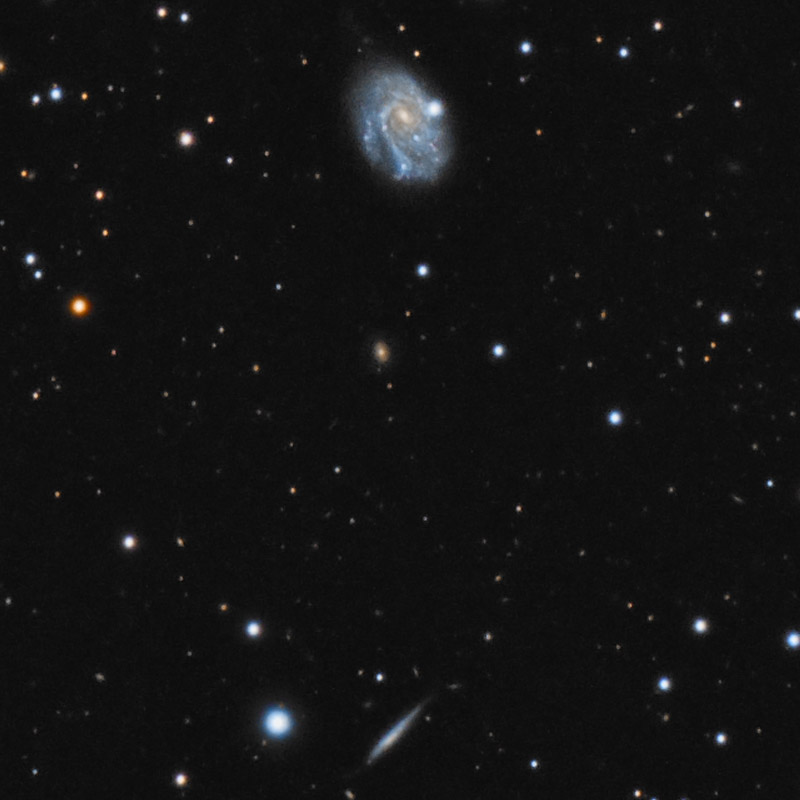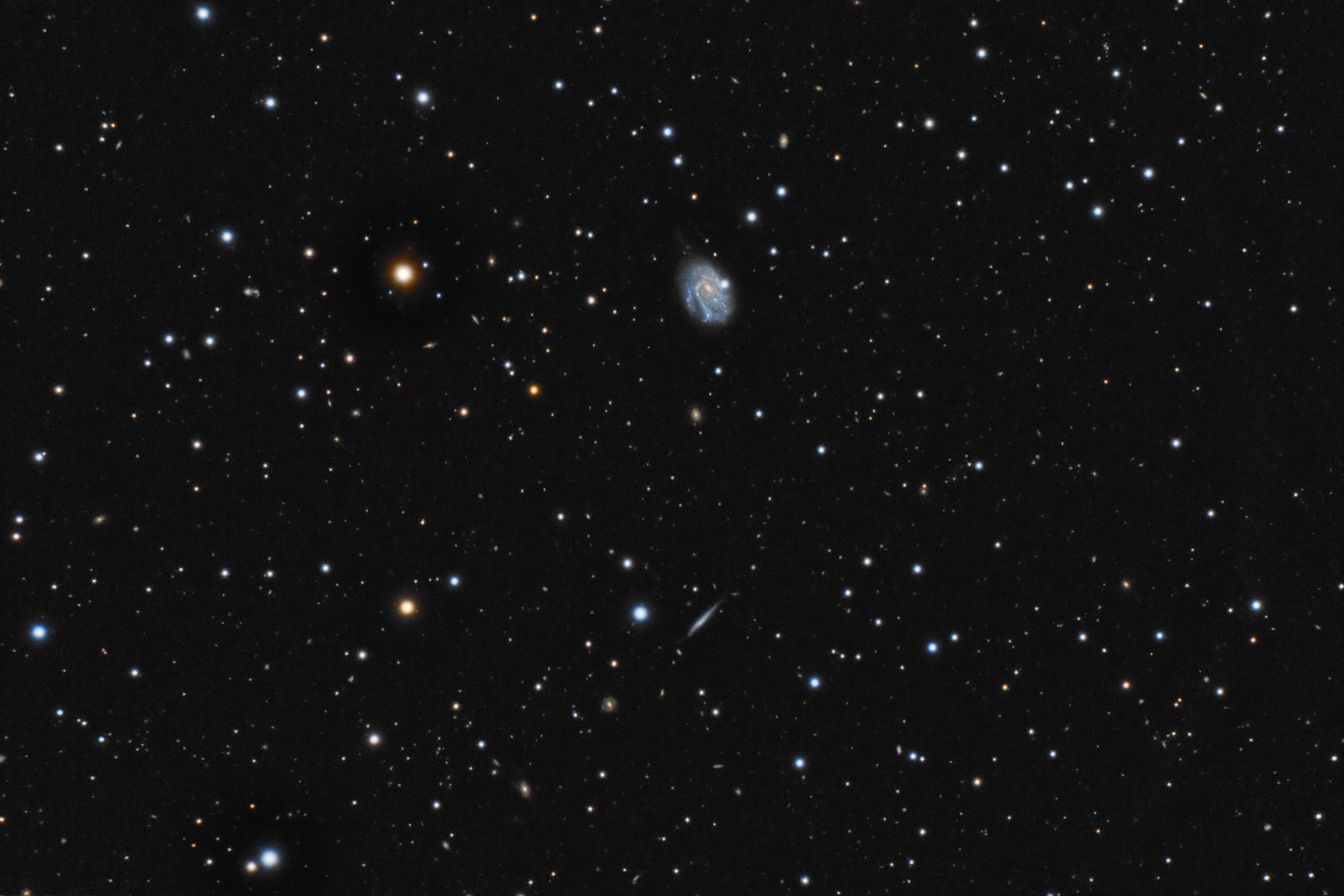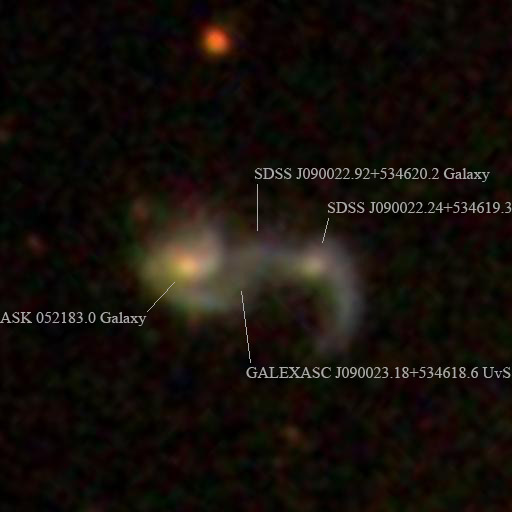| Description | Images |
Object name: FGC0818Designation(s): FGC0818, NGC2701, It's a bonus when I can get two strange objects in one field. This possibility is why I invested in as large of a chip as was available at the time I bought my camera. This field comes from western Ursa Major between the bear's chin and front paws. It consists of two unsymmetrical spiral galaxies, one an edge on flat galaxy the other a face on galaxy that may be flat but you can't tell seeing it face on. The flat galaxy is FGC 818 at 110 million light-years by redshift and 180 million by Tully-Fisher. Its core is well southeast of center. About the center is an object NED calls SHOC 231 and lists as "Part of Galaxy" indicating its part of FGC 818 but its redshift is 128% as great leaving me confused. I've drawn lines to the location NED gives for each object. Related Designation(s):2MASS J08590575+5346179, 2MASS J08590783+5337567, 2MASX J08590572+5346183, 2MASX J08590782+5337573, 2MFGC 07015, ASK 051881.0, CGCG 0855.3+5357, CGCG 0855.4+5349, CGCG 264-043, CGCG 264-044, FGC 0818, FGC0818, IRAS 08554+5357, IRAS F08554+5357, MCG +09-15-063, MCG +09-15-064, NGC 2701, NGC2701, NSA 010627, NSA 135591, PGC 025235, PGC 025237, RFGC 1463, SDSS J085905.74+534618.0, SDSS J085907.81+533756.5, SDSS J085907.82+533756.5, SIT 0022-1, UGC 04695, UGC 04696, UZC J085905.4+534614, [PVK2003] J134.77625+53.76944 , | Permanent link: https://images.mantrapskies.com/catalog/OTHER/FGC0818-NGC2701/FGC0818L4X10RGB2X10CROP125.JPG Permanent link: https://images.mantrapskies.com/catalog/OTHER/FGC0818-NGC2701/FGC0818L4X10RGB2X10R.JPG |



